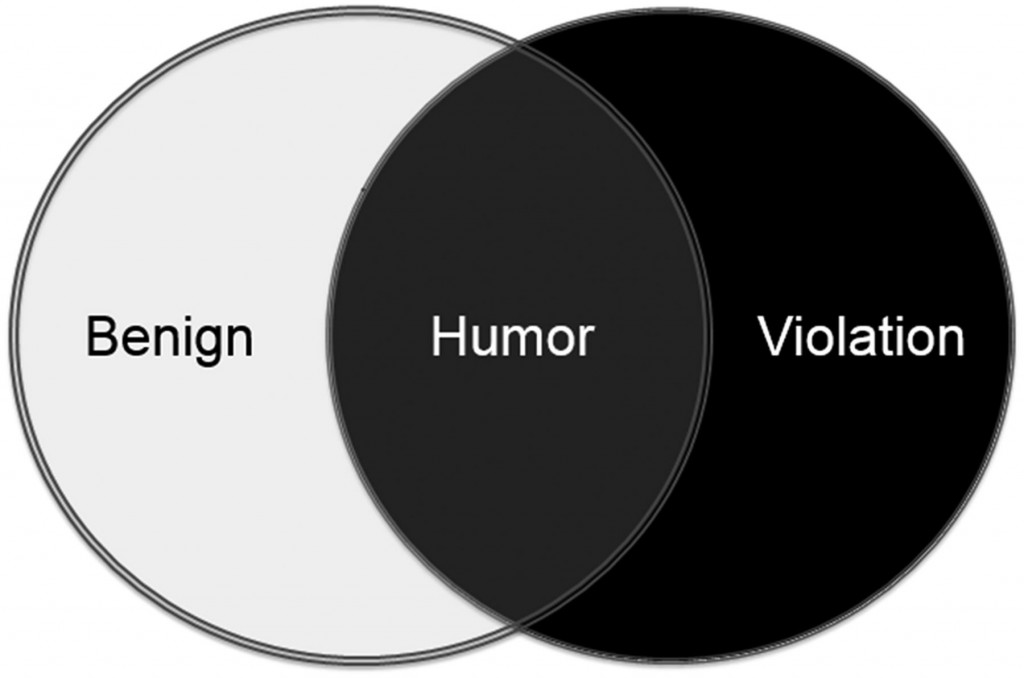Whether it’s America’s Funniest Home Videos or Just For Laughs gags, we’ve all found ourselves laughing at someone tripping down the stairs or falling off a ladder. Some of the most viral videos on the internet are falling videos. What is it about falls that makes them so funny?
Humor is considered to be personal and subjective, except it seems when people trip, stumble and eventually fall. Be it ancient Romans or Greeks, people from across the ages have enjoyed a hearty laugh at the expense of a falling person.
Falls Are Universally Funny
Our perception of humor is deeply rooted in our culture and hinges on a complex interplay between emotions, personality and social values. A punch line that cracks up one audience might fall flat for another.
However, there are certain fundamental aspects of humor that cross social and cultural boundaries to make them universally funny. “Falls” fall in this category. They are awkward, absurd, sometimes disastrous, but most often hilarious. They elicit laughter, not only in humans, but also in animals. It is highly likely that if a group of apes were to watch you slip on a banana peel, they would all burst into laughter.
The above video is a compilation of epic falls that end in laughter.
What is it about a falling person that instantly cracks us up?
Also Read: Why Is It So Difficult To Make Someone Laugh?
Falls Are Unexpected
Under the normal circumstances of life, falls are unexpected and incongruent. According to the theory of incongruity, one of the most widely accepted theories of laughter, there has to be a fundamental incompatibility between expectation and reality for us to find something funny.
As humans, we have certain understandings that define the normal order of things for us in day-to-day life. Our perceptions decide how an action was supposed to happen or how an event should have unfolded. According to the incongruity theory, we feel amused when we are faced with an experience in which the normal order of things is violated. Our amusement is expressed in the form of laughter.
Be it Madonna’s fall at the BRIT awards, models tripping over their trailing outfits or your own child very excitedly running towards you and falling down on their face in pool of muddy water, all of these are examples of events gone wrong. The humor in these situations can be explained by the incongruity between expectation and reality.
Take the example of a man tripping down the stairs in the following video:

Walking down the stairs is supposed to be a simple and straightforward task for an adult human. The fall, therefore, is unexpected. You don’t see it coming, so you burst out laughing.
Also, the way the man falls looks particularly comical and may remind of you of a funny scene from a beloved comedy movie or cartoon.
In addition to incongruity, another thing that makes these falling videos funny is the fact that we end up imagining them in a funny or non-serious context. This is when something known as a ‘play frame’ is established.
The Concept Of Play Frame
According to Gregory Bateson, a 20th century thinker, we usually frame our actions as ‘serious’ or ‘play’. When our mind places a real-life situation in a context that is considered non-serious, a play frame is established.
A fall can potentially injure a person, but the expressions of the person falling and the flailing gestures can make the entire scene look like something straight out of a cartoon.

However, if you were to look at a person falling down from the 27th story of a building, you’re more likely to gasp with horror, instead of laughing. The possibility of getting very seriously injured or dying takes the establishment of a non-serious context or a play frame completely out of the picture and prevents laughter.
Therefore, it is safe to say that when the context becomes too risky or unsafe, a fall will not initiate laughter. The theory of benign violation elaborates further on this point.
The Theory Of Benign Violation
This theory is built on the work of a linguist, Tom Veatch, and unifies all the other theories of laughter into one. According to the theory, laughter is elicited when the following conditions are met at the same time: (1) a situation is a violation; (2) the violation is harmless or benign; and (3) both perceptions happen simultaneously.
A violation occurs when your belief regarding what ”ought” to be is threatened. In simple words, anything that you find unsettling or wrong becomes a violation. This aligns with the theory of incongruity, where reality differs from perception.
Falls can be physically threatening and therefore present themselves as violations in day-to-day life. The second condition is met only when the violation is harmless or occurs in a safe context. Therefore, falls that seem less risky in terms of physical injury or pain are the ones that are more likely to elicit laughter.

The strength of a theory is also judged by how well it can explain why certain situations are not funny. In the example of a person falling from the 27th story, the threat or risk of death or extreme physical injury is so huge that the situation cannot be considered safe or benign.
Now, what about videos that make you laugh in spite of a fall being severely injurious? Such situations are surely not benign when it comes to the physical safety of the featured individual! However, researchers working on the theory suggest the benign part of the violation can be attributed to several factors, psychological distance from the victim being one of them. It is possible that you might laugh at the misfortune of a person you happen to not know, but would be more empathetic towards someone who is emotionally closer.
Also, watching the video on your phone in the comfort of your own house makes you physically distant from the situation, and may therefore make it seem more benign.
Also Read: The Science Of Laughter: Why Do We Laugh?
Society Teaches Us To Laugh At Silly Behavior
The theories of laughter discussed above justify the humor in falls by looking at it from a psychological point of view. Conditioning from society is an important contributor when it comes to shaping the psychology of a person.
According to philosopher Henri Bergson, society teaches us to laugh at behavior that is silly or careless. Since no one enjoys being laughed at, there is a possibility that it helps society set firm rules in place. However, laughter is known to have evolved as a mechanism for relieving stress. Therefore, one could argue that laughing eliminates the stress of second-hand embarrassment that might come from looking at someone make a fool of themselves.

You’re Glad It Wasn’t You
At times, we laugh at the misfortune of others, while feeling relieved that it didn’t happen to us. Some researchers suggest that it gives us a feeling of superiority, along with a sudden realization of how much better we are than the victim. However, it wouldn’t be incorrect to say that more often than not, we end up feeling empathetic for the person taking the fall. Therefore, the theory of superiority might apply to some situations, but not all.
A Final Word
Laughter evolved as a mechanism to relieve stress. It is one of the most important tools for building social bonds and breaking awkward silences. One’s sense of humor and triggers of laughter vary amongst different people, but there are certain situations that cut across culture, religion and race to elicit laughter universally. It is these situations that bond us together as humans.
Therefore, be it comedy shows or videos of people falling over, laugh while you still have the chance!
How well do you understand the article above!

References (click to expand)
- (2014) Incongruity Theory and the Explanatory Limits of Reason. The University of Vermont
- Coates, J. (2007, January). Talk in a play frame: More on laughter and intimacy. Journal of Pragmatics. Elsevier BV.
- A brief introduction to the benign violation theory of humor. petermcgraw.org
- (2010) Benign Violations: Making Immoral Behavior Funny. The University of Colorado
- (2012) Philosophy of Humor. The Stanford Encyclopedia of Philosophy
